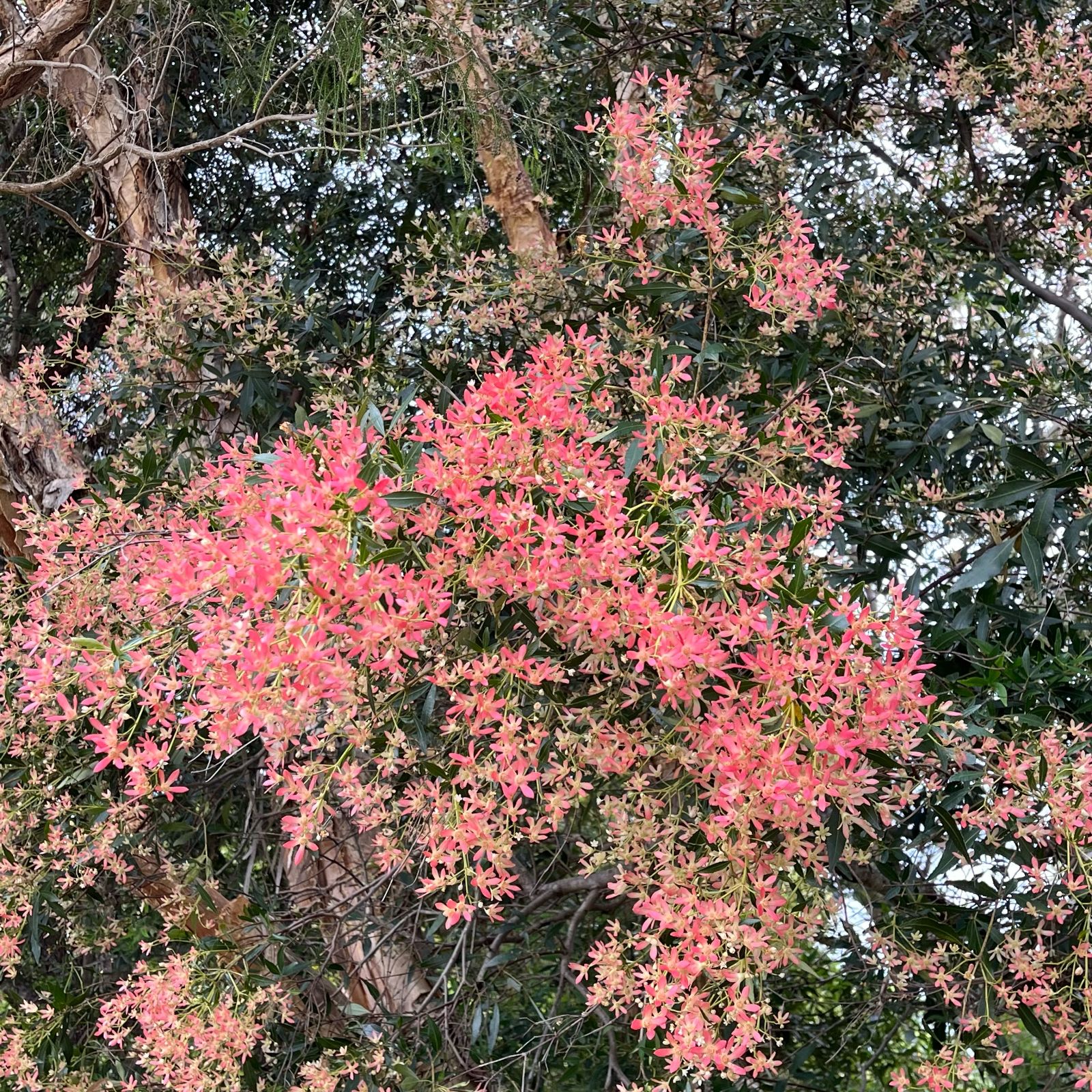Ceratopetalum
Credits
Article from New Trees by John Grimshaw & Ross Bayton
Recommended citation
'Ceratopetalum' from the website Trees and Shrubs Online (treesandshrubsonline.
Family
- Cunoniaceae
The eight species of Ceratopetalum are endemic to eastern Australia, with the exception of C. succirubrum C.T. White, which extends into New Guinea (Fortune-Hopkins & Hoogland 2002). Most are tall rain-forest trees, though C. gummiferum is a shrub or small tree of sclerophyllous forest, and is the only one likely to have any chance in our area. Ceratopetalum have opposite, decussate leaves with one or three (rarely two) leaflets, prominent venation and no domatia, and resinous, caducous stipules. The inflorescences are terminal or axillary, rather sparse and subtended by reduced leaves or bracts. The branching pattern is basically decussate, with corymbs or cymes terminating the ultimate branches. The flowers are hermaphrodite and the petals are incised or absent. The fruit is an indehiscent capsule with woody wings formed from the persistent calyx lobes (Hoogland 1960, Fortune-Hopkins & Hoogland 2002, Rozefelds & Barnes 2002).

